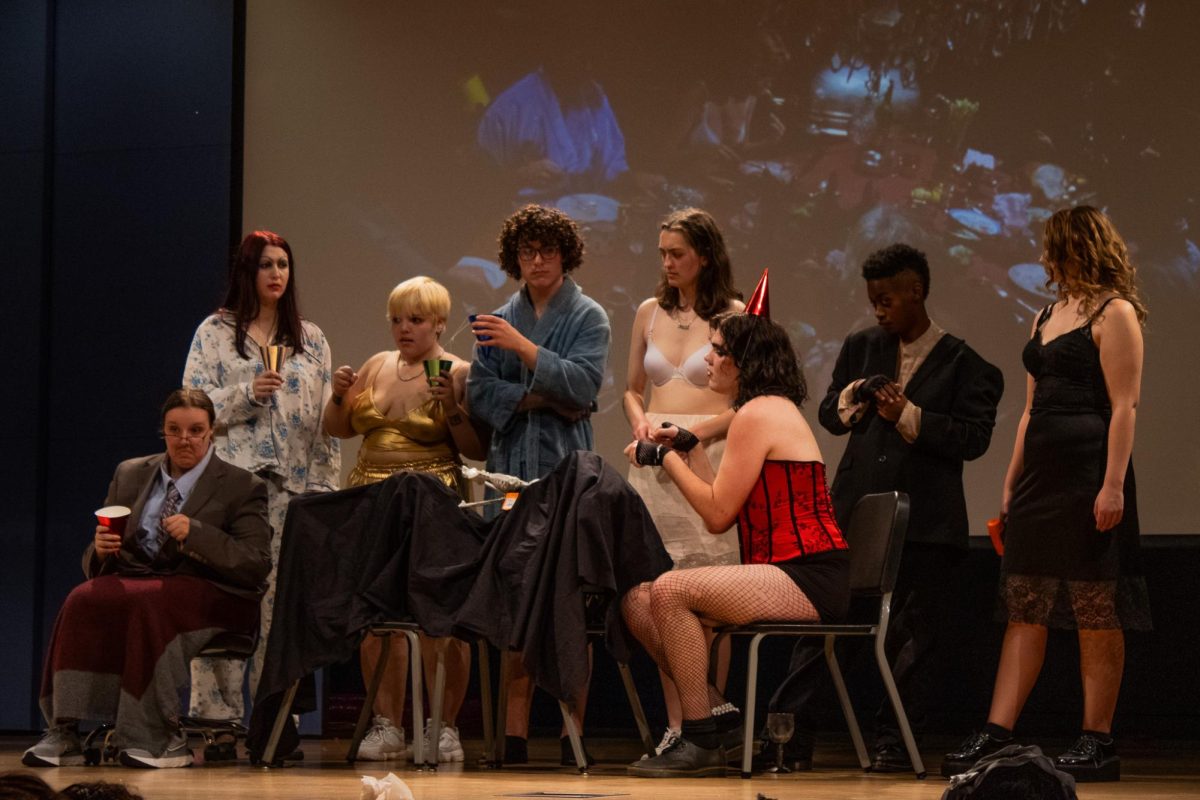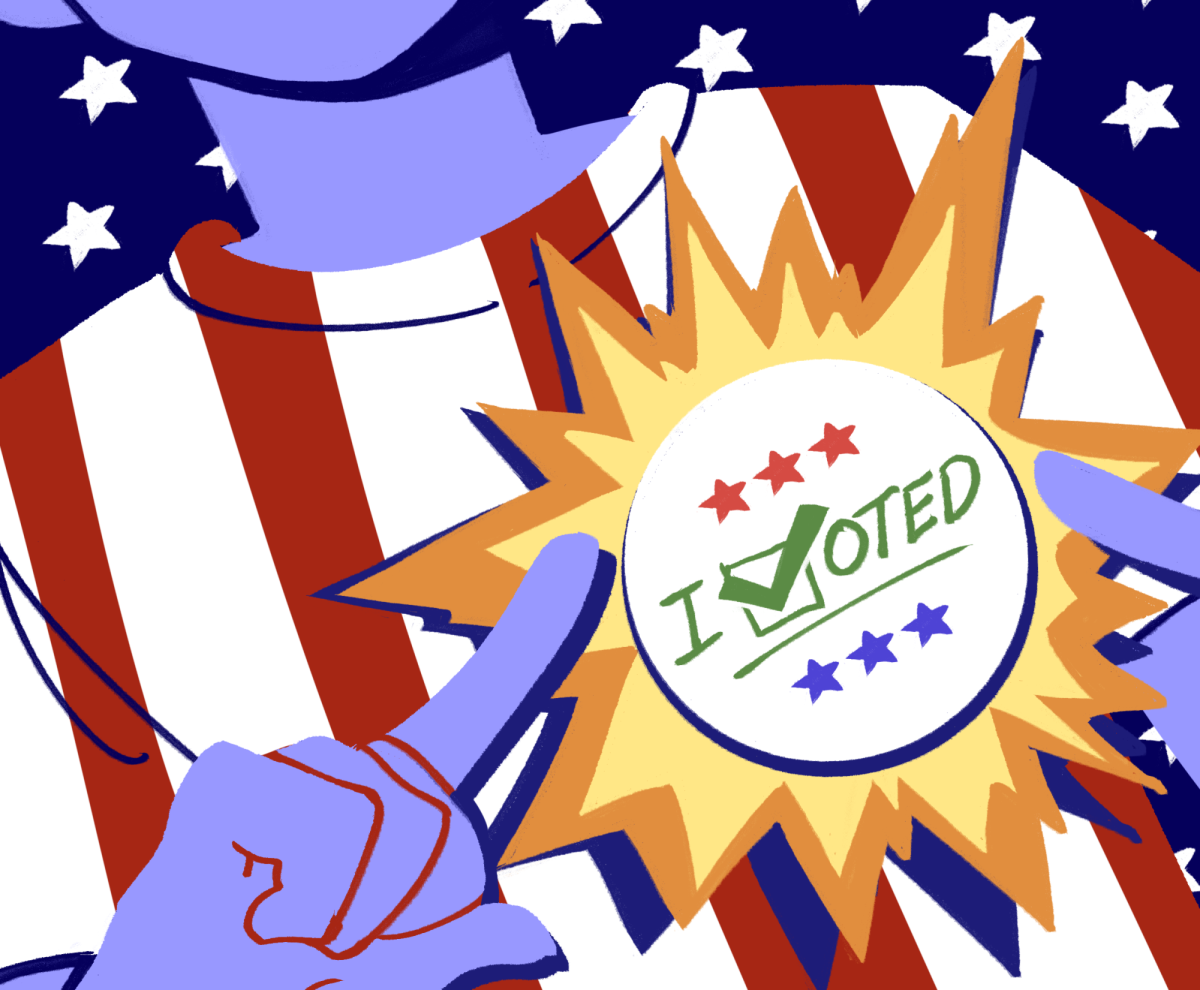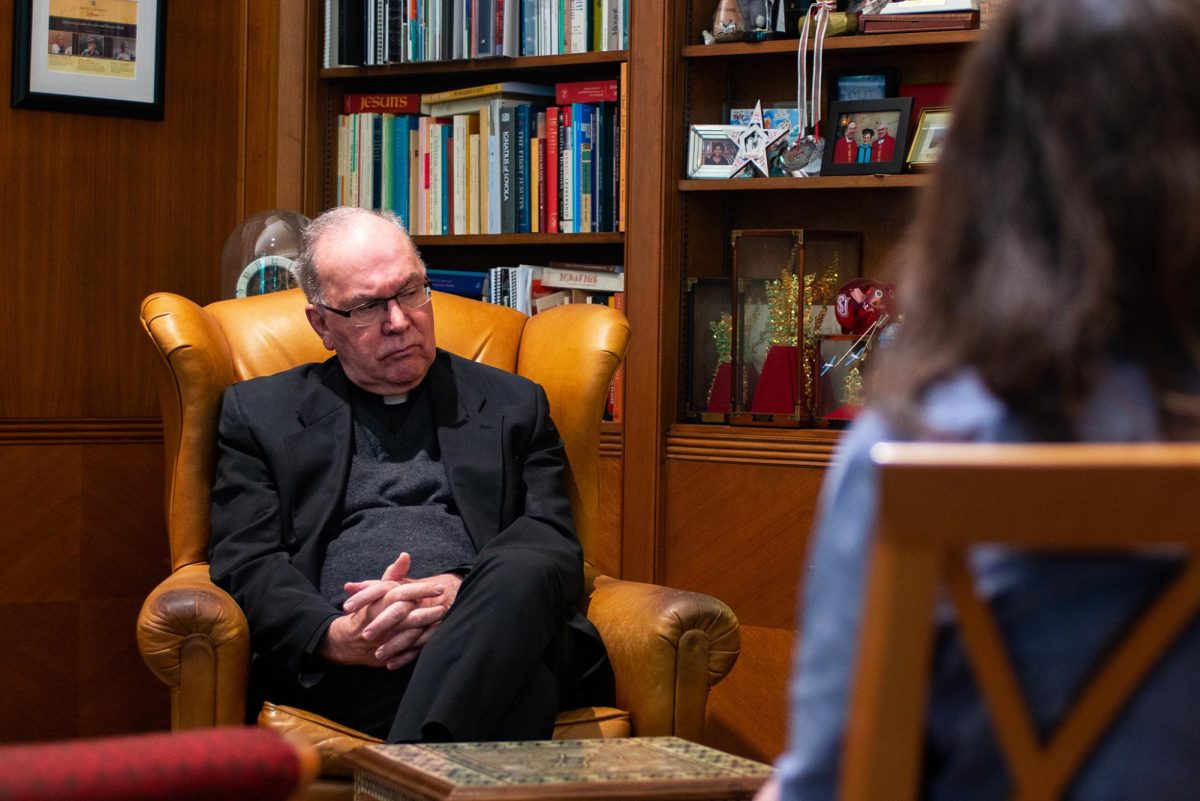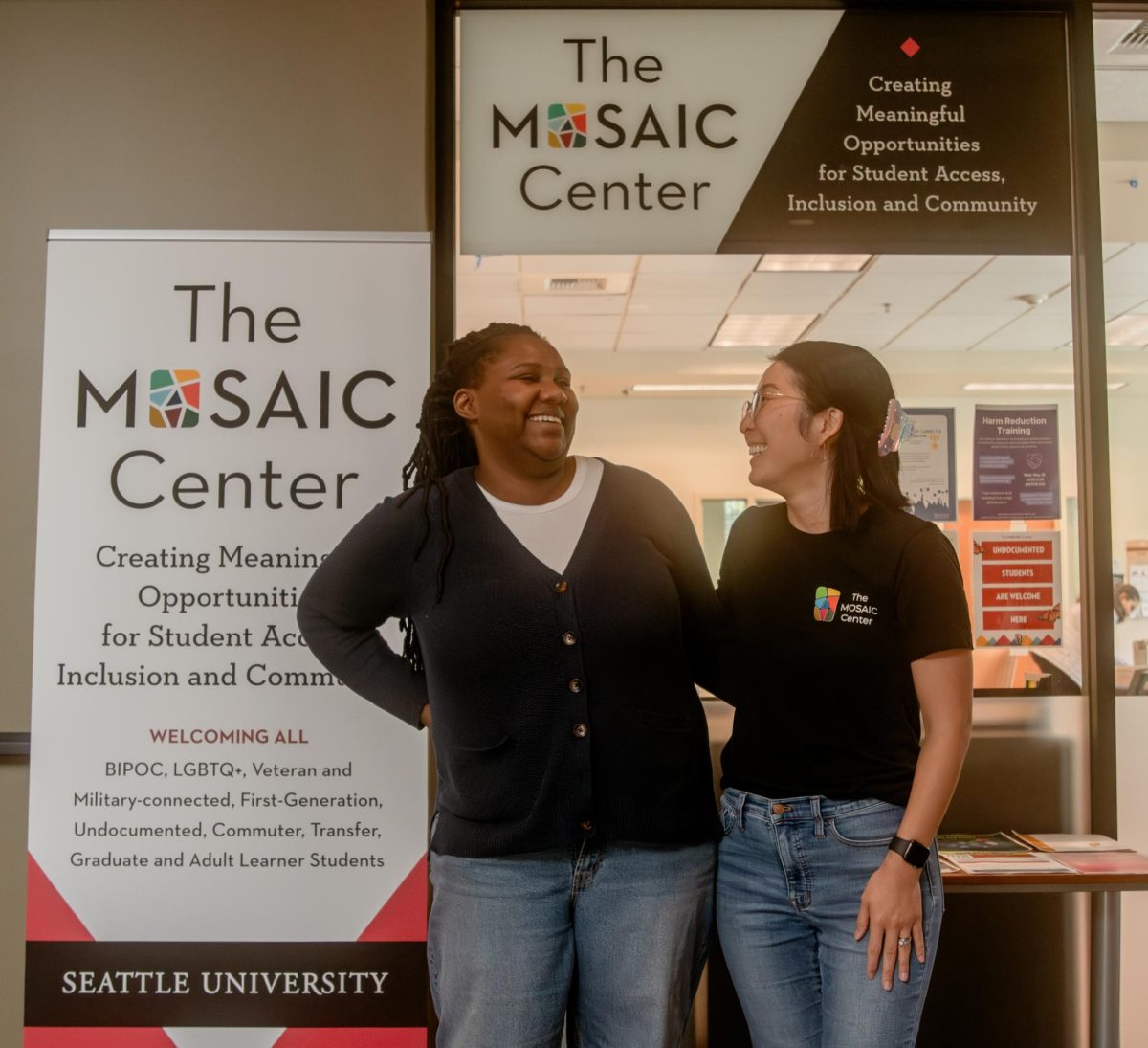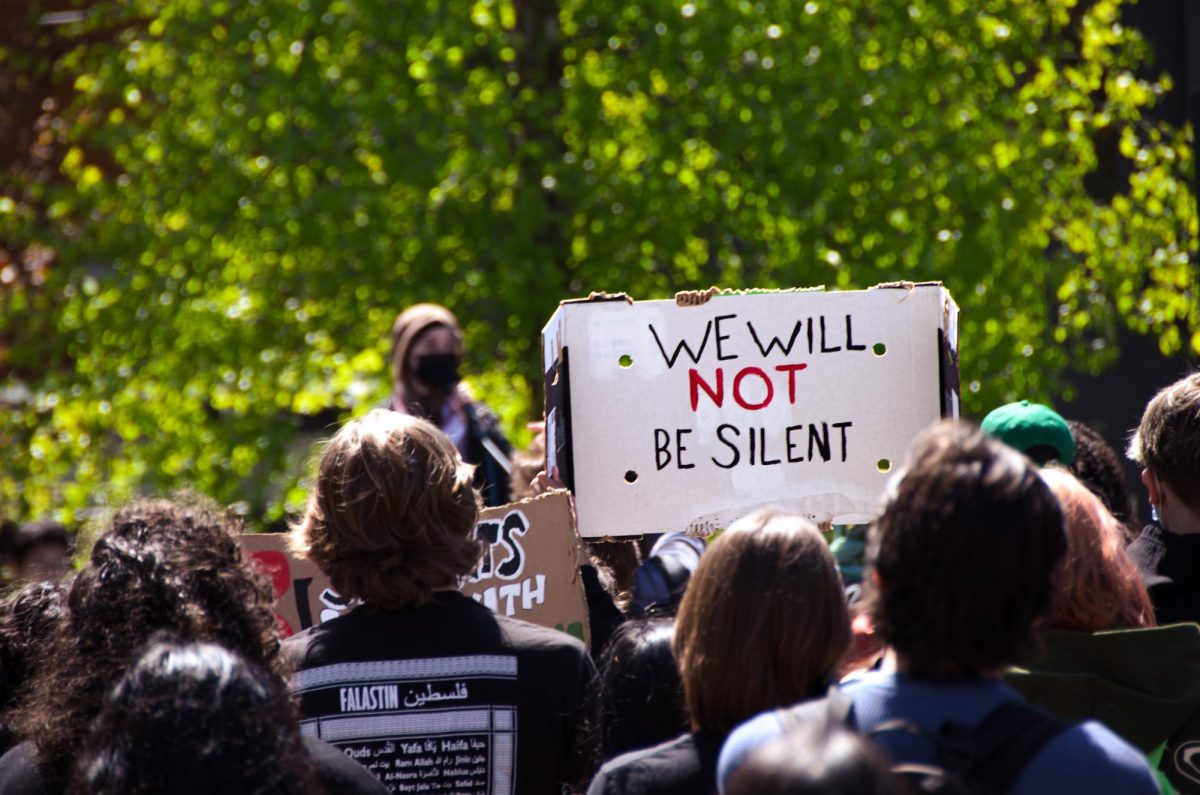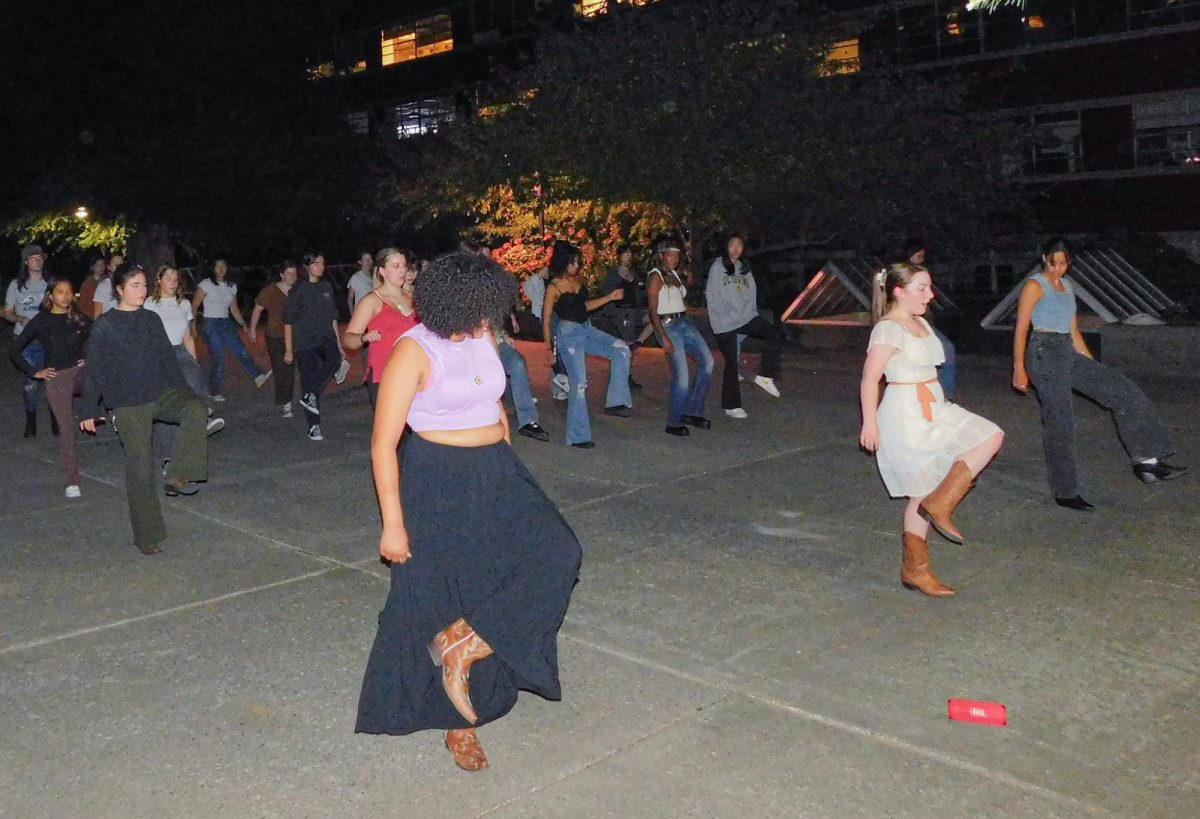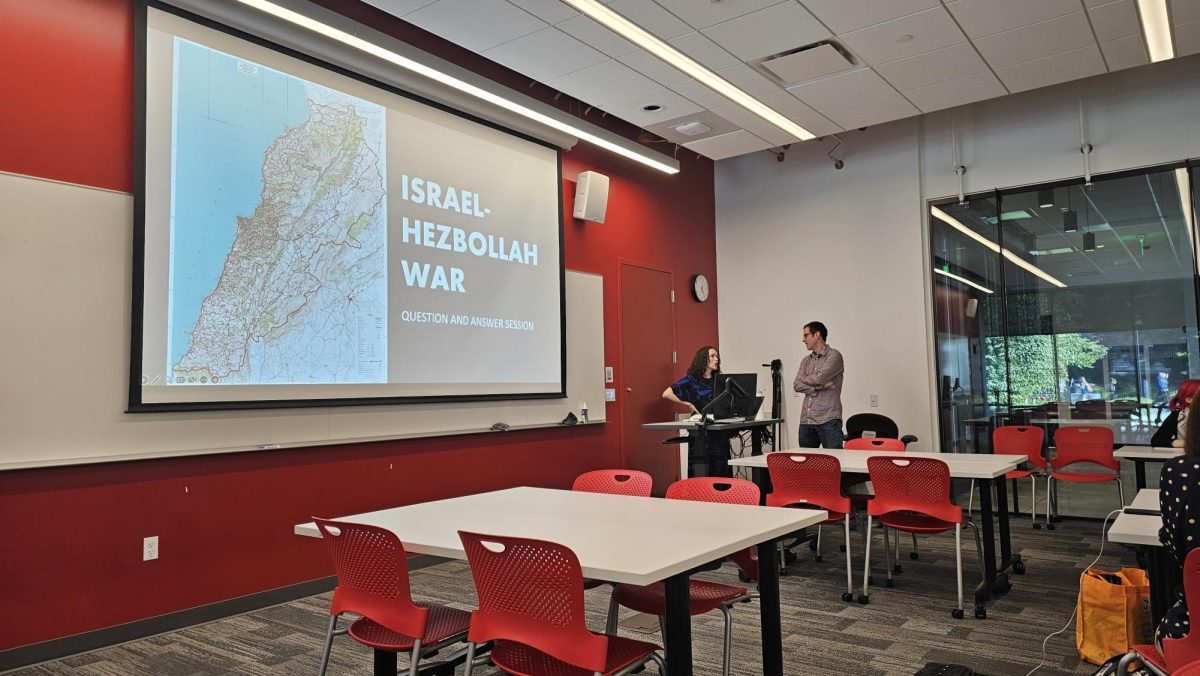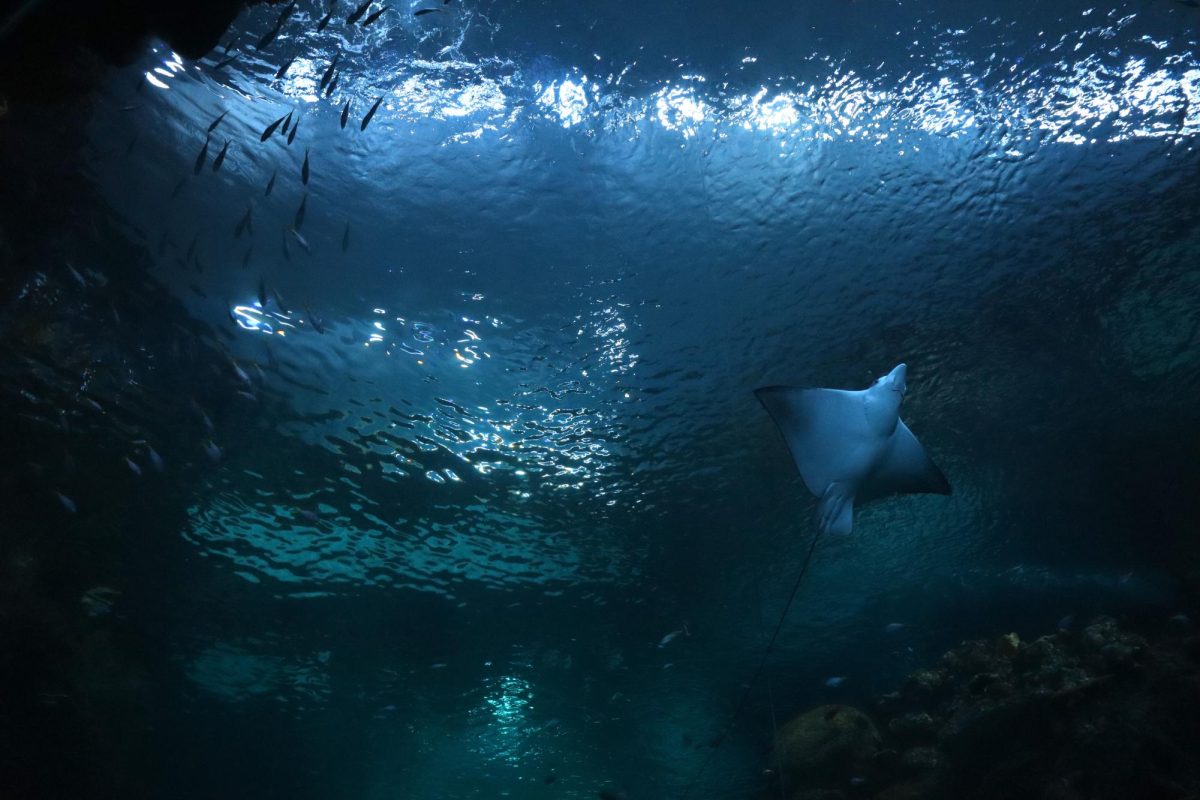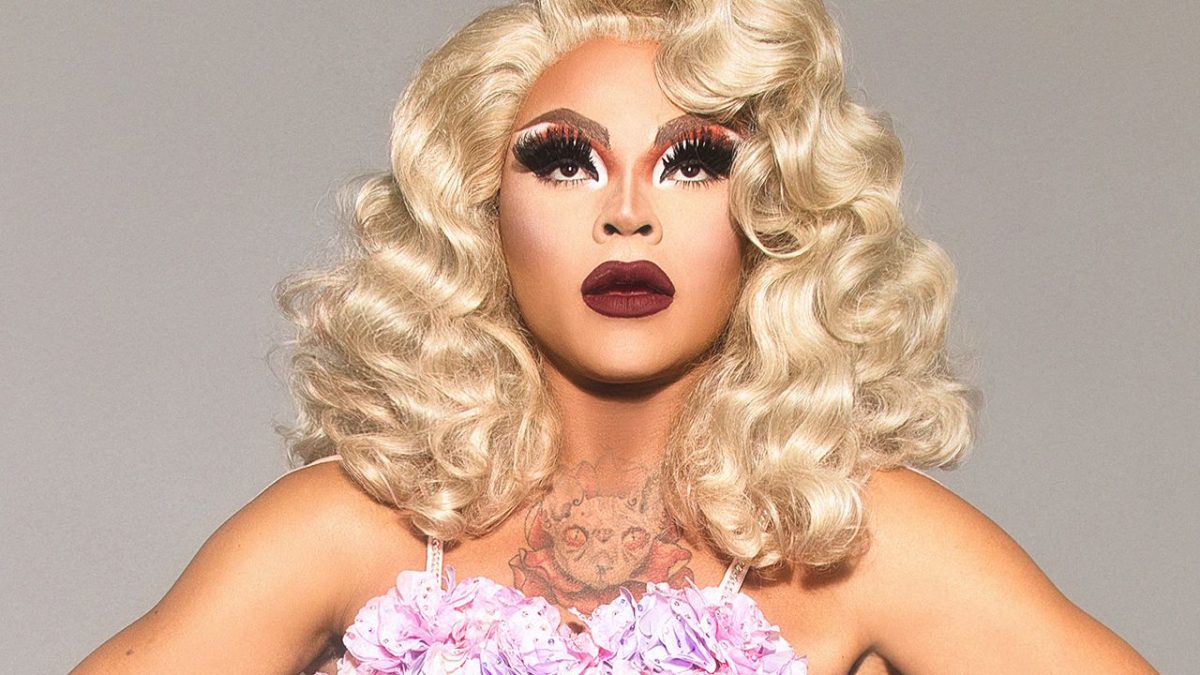The lovingly resurrected cult classic, “The Rocky Horror Picture Show,” enthusiastically invites Seattle University persons to experience the “embodiment of queerness that is Rocky,” Fourth-year Environmental Studies major and Director Katie Sharp said.
“It’s very dark red, sparkly, very campy and very silly. It’s free,” Sharp said.
In its subversive universe, coated in satin virgin lips and lathered with sex, “The Rocky Horror Picture Show” cultivated their midnight mass.
Lacy lingerie and platform stilettos are the unspoken attire for the annual Inigo Student Theatrical Production. The people, dressed in nothing, chanted “Rocky!” at the stage.
The character of Dr. Frank-N-Furter, self-proclaimed “Sweet Transvestite from Transsexual, Transylvania,” has been a little lonely lately, played by Second-year Communication & Media major Jasper Mathews. The alien scientist, obsessed with sex and dressed in a promiscuous uniform, parades his gothic mansion, seducing everyone (or trying to).
The film centers on Frank-N-Furter’s yearly performative Transylvanian convention, and he’s putting on a show! To the wild and untamed, to his freakish friends, he exposes his newest creation, Rocky—the Golden Boy, played by Fifth-year Physics major Sarah Torset. Rocky is manipulated by the doctor, used to “ease [his] tension,” much like the rest of the bodies that congregate around him.
Traditional newlyweds, Brad and Janet, have been lured into the mansion to witness the doctor’s witchiness. During the musical number, ‘I Can Make You a Man,’ the song is interrupted by Eddie, who’d been trapped: frozen in a vault by the doctor. Eddie was one of the doctor’s former lovers, but his liking to Columbia would cost him half his brain which was then used to create Rocky.
Eddie sings the annoyingly catchy ‘Hot Patootie,’ when Rocky begins to dance.
The doctor, in a jealous rage, butchers Eddie with an ice pick and continues the reprise to ‘I Can Make You a Man,’ as the rest of the cast screams (or stares, expressionless) at the crazed doctor.
Stuck in his celebrity as an artist and madman, Dr. Frank-N-Furter and the rest of the cast sing, dance and pout to the Picture’s plotless shrine of corsets and ripped fishnets and red lipstick galore.
Attributed to the LGBTQ+ community, the Picture Show, which embraces sexual freedom and pirates off that audience, plays an important role in queer identity and experience.
“Rocky Horror is so important for Seattle University because we have such an active LGBTQ+ community. The history of Rocky has been brought on stage for us to be able to share all types of love and all types of being to our campus, which we absolutely need more of,” Sharp said.
Upon its initial release, the campy beacon of sexuality had flopped and was quickly shelved. Its failure was blamed on the movie’s barbaric uniqueness. It was labeled as ghastly and dumb-humored.
It was the midnight screenings that had saved the show. Rocky Horror was played at the Waverly Theater in Greenwich Village, New York in 1976, an excuse for small fans to dress up and sing along to something. Loyal regulars would arrive and sit in the same seats. A sense of community there was quickly vitalized.
Commentary or “counterpoint dialogue” during the screening was introduced that same year. Fans screaming callback lines to get the rest of the audience to laugh, came with props for fans to throw onto stage (i.e. rice, hot dogs, water, bubbles).
It didn’t stop there.
Devout fans, in costume, obsessed with the Show’s theatrics and modern flare, would run onto stage and lip sync to the large characters behind them.
These fan traditions moved beyond the Waverly Theater as its glamor and parody, rock and roll and 50s campiness became contagious; that sense of an accepting community sought after.
Over the next four decades, the Picture Show had been metamorphosed from an underground phenomenon of a joke into a rebellious, erotic queer ritual.
Born and reborn in the midst of the punk revolution, “The Rocky Horror Picture Show,” bleeding in art deco and unapologetic provocation, had sustained itself into contemporary entertainment.
What once was the embodiment of the other, had warped itself into a cult classic.
It is a culture and a tradition. A campy, beautiful mess.
Third-year Psychology major Tess McDowell, who plays Columbia, commented on the way in which “Rocky Horror Picture Show” creates community.
“The show is really something we make ourselves,” McDowell said.
When describing the aesthetic of Rocky and how the cast regards that, McDowell said, “I think it’s really just a fun and campy picture… We have a fun group dynamic. It’s just a place where you can come and have a good time,” McDowell continued.
The Inigo Student Theatrics Production puts on “The Rocky Horror Picture Show,” complete with a shadowcast, every year.
“While this isn’t the only thing we want our club to be known for, it’s definitely something that’s really given a place for us on campus… Most of the cast is queer, so, I think it’s really about having an outlet to express that,” McDowell said.
Sharp commented on Rocky’s tradition and the playfulness that envelops its theater.
“It’s a time-honored tradition since the 70s and we’re super stoked to be part of that tradition. It holds a special part of so many of our hearts, definitely in mine, and being able to bring back a good tradition, a chosen tradition, to this campus and to all of our friends and peers is really incredible,” Sharp said.
On why the culty praise came about, years after the film’s debut, Abby Poe, a third-year psychology major, suggests Rocky was ahead of its time.
“The movie was so progressive and out there. Even today, people will still consider it progressive and wild. I think it just needed time for people to catch up,” Poe said.
This is Poe’s third show with Inigo Productions, recounting her role in the Picture Show last fall. Last year, she took on a principal role and played Brad, while this year she took on characters Eddie and Dr. Scott.
“Every year we have rounds of auditions. We have student directors who sit in on auditions and agree on casting, but Inigo has this unofficial rule that we don’t cast people in the same role twice. Last year, I played Brad, and I love how that rule keeps us from being stagnant,” Poe said. “It’s a show meant for the stage. Rocky Horror is an experience. There’s something you get from live theater that is so different from just watching the movie. It’s really about not only the stage and theater community, but also the queer community that adds to the Rocky experience.”
The Rocky experience, with its undeniable cult creed of “Don’t dream it, be it!,” in its list of song souvenirs, never fails to convince its fans to laugh, yell, or pelvic thrust on cue. With just a jump to the left, Third-year Creative Writing major Sammy Taylor, Rocky’s emcee, ad-libbed instructions and jokes for the audience to follow.
As Janet Weiss, Fourth-year Environmental Science major Patricia Jones stripped on stage, she talked of how liberating it felt.
“It’s definitely scary, but I’m just proud that I did it,” Jones said. “The Picture Show is something I’ve never done before. It feels good to do something so out of my comfort zone and enjoy it and just have a good time.”
First-year pre-major Kade Schneider played Brad Majors and said it was “incredibly freeing with such a supporting and lovely cast.”
“[The Rocky Horror Picture Show is] crazy mayhem. Just, sexy people doing sexy things,” Schneider said. He’s surrounded by flowers and friends, twisting the straight-man caricature of Brad into a deliciously comic disaster!
The naive fall of Dr. Frank-N-Furter, swimming in purple and chartreuse in his “I’m Going Home” solo, created a wonderland of nostalgia and sadness. As the actor, Mathews, walks the aisles, weeping off their smudged blue eyeshadow, the Picture Show ends.
“I’m on such an adrenaline rush,” Mathews said.
I’d tracked them down after curtain-close and applauded their performance.
“This is our fourth show this weekend, it’s been wonderful and so fulfilling,” Matthews said. “I feel f—ing incredible.”
Alex Takemoto, a third-year interdisciplinary liberal studies major, attended the midnight performance.
“They absolutely killed it this year,” Takemoto said, after having seen past years’ renditions of the Picture Show. “In a classic sense, this is probably the best year I’ve seen it done so far… I love these people.”
The raunchiness and sexiness of “The Rocky Horror Picture Show,” a beast of theater, marred with popular outrage and rotten tomatoes, holds its treasure as the longest continuously running movie and pop culture reference.




